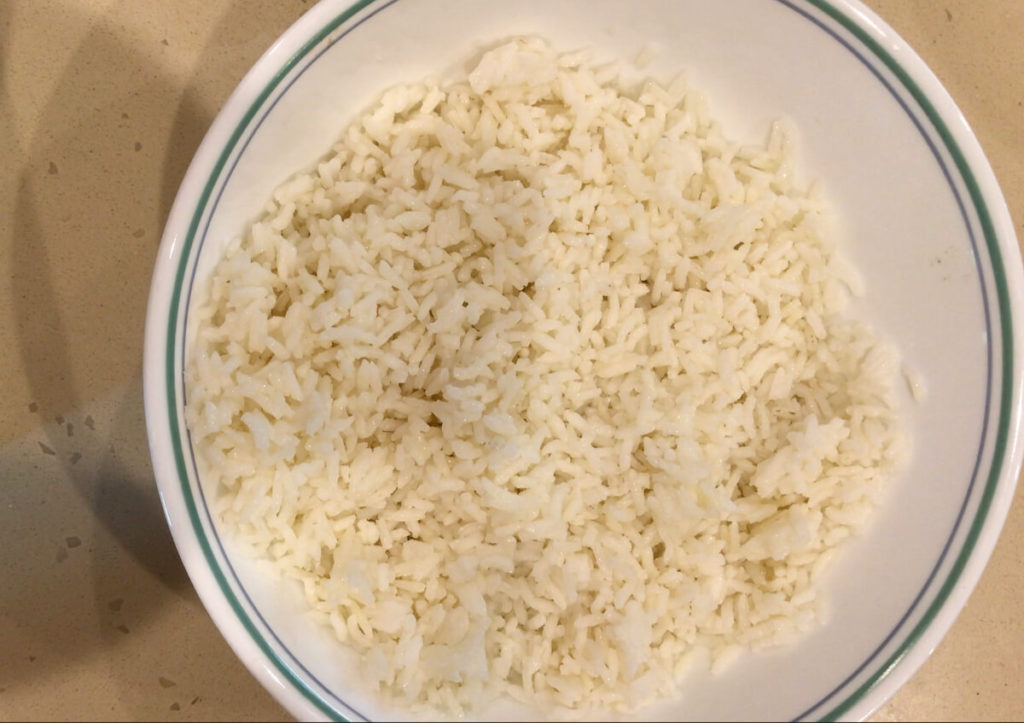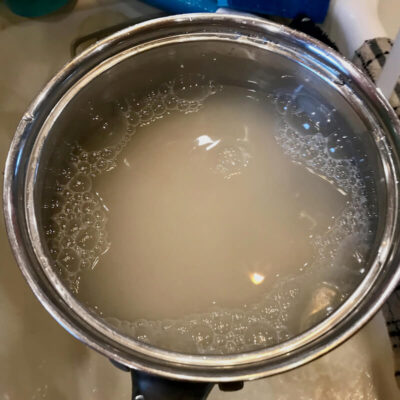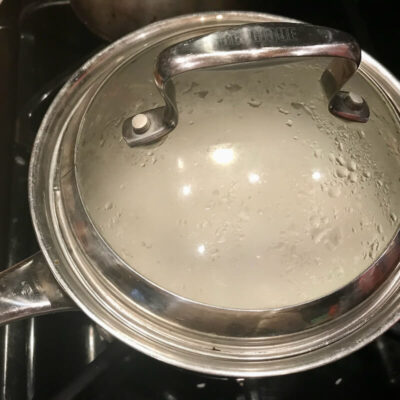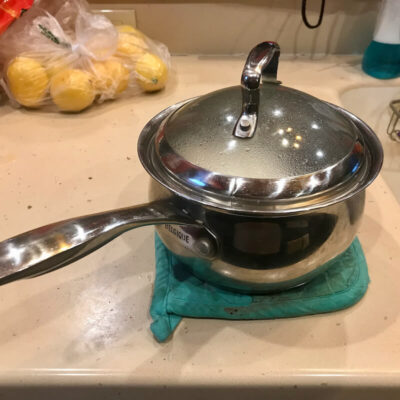Do you know the traditional Chinese method for cooking rice? Do you find when you follow the directions on the bag of rice you got from the store, you get mushy or sticky rice? This method works for white, parboiled, and whole grain (or brown) rice. For the latter, the cooking time is longer. Read on to learn how the Chinese cook rice.

You do not need a rice cooker in order to cook rice. A sauce pan with a lid serves the purpose very well. However, do not follow the instructions on the bag of rice. Invariably, I find this results in a mushy, sticky rice. This is fine to eat when it is hot, but the leftovers will be too sticky for making a good fried rice.
I have tried several methods to prepare rice. After much experimentation, I found Grace Young’s recipe for “Steamed Rice.” Young learned the traditional Chinese method for rinsing and steaming rice. This is the best way I have found to cook rice.
Tips for cooking rice
- Rinse the starch from the rice. Place the rice in a sauce pan and rinse with cold water. The water becomes cloudy with the starch. Then pour the rice into a colander to drain, return it to the pan, and rinse again. Keep repeating the process until the water is clear.
- Ignore the instructions on the bag. Most bags of rice sold in the US have the same preparation steps, using 1 part rice to 2 parts water, some oil or butter, and salt. This ratio of rice to water results in a soft, sticky rice when cooked. The bag will also say to bring the rice to a boil, reduce the heat, and cover. Leave out the oil, butter, and salt.
Similar traditions for cooking rice
Mexican Rice is made by soaking the rice in hot water then rinsing with cold water. Then the rice is browned in a bit of oil, then simmered with a sauce made from tomato, onion, and garlic, and finally simmered in chicken broth. Apart from the browning and adding a tomato sauce, the basic method is the same.
Creole Rice is made by boiling the rice with bay leaves until tender, then draining the water and baking the rice in an oven for a few minutes.
The traditional Chinese method is simplest, and more economical in terms of fuel usage. More importantly, the Chinese “send” the rice when they eat. Whereas Westerners treat the rice as a side dish, Chinese fill their bowls with the rice and then spoon the entree on top to flavor the rice. Jing even created a new recipe for her friend Yun, Tomato, Beef, and Potato Soup, designed to use this principle.
Steaming Rice
Equipment
- 1 1.5 quart saucepan
Ingredients
- 1 ⅓ cup white rice, long grain (substitute par-boiled rice or brown rice)
Instructions
- Rinse the rice with cold water several times, until the water runs clear. This washes away extra starch. Starchy rice will be gummy, or sticky.1 1/3 cup white rice, long grain
- Level the rice in a 1.5 quart saucepan and cover the rice with 1 inch of water. (For 1 1/3 cup rice in a 1.5 quart saucepan, this is about 1 2/3 cup water.)Hint: If you insert the tip of your index finger, the water level should just reach the crease of your first knuckle. More water than this will make the rice mushy.
- Cover the saucepan and bring the water to a boil. (A clear lid on the sauce pan is very helpful, so you do not have to lift the led and let the water vapor escape.)
- When the water comes to a boil, reduce heat to low, and simmer. For white or par-boiled rice, simmer for 10 minutes. For brown rice, simmer for 45 minutes.
- Watch the rice. When all water is absorbed (it may take a little longer than 10 minutes), turn off the heat. Immediately fluff the rice with a fork.
- Replace the lid on the pan to keep the rice hot, and allow further absorption of any water, until you are ready to serve.
- To use the leftover rice for fried rice, let the rice cool to room temperature, then refrigerate overnight.
Notes
- For whole grain or brown rice, the simmering time is longer, about 45 minutes, until all water is absorbed.
Nutrition
Do you enjoy My Chinese Home Kitchen?
We enjoy sharing these authentic home recipes with you. Learn more about My Chinese Home Kitchen at our About page.
Please leave a comment, or SUBSCRIBE to our newsletter.
For more of our original videos, visit My Chinese Home Kitchen on YouTube and Rumble.








